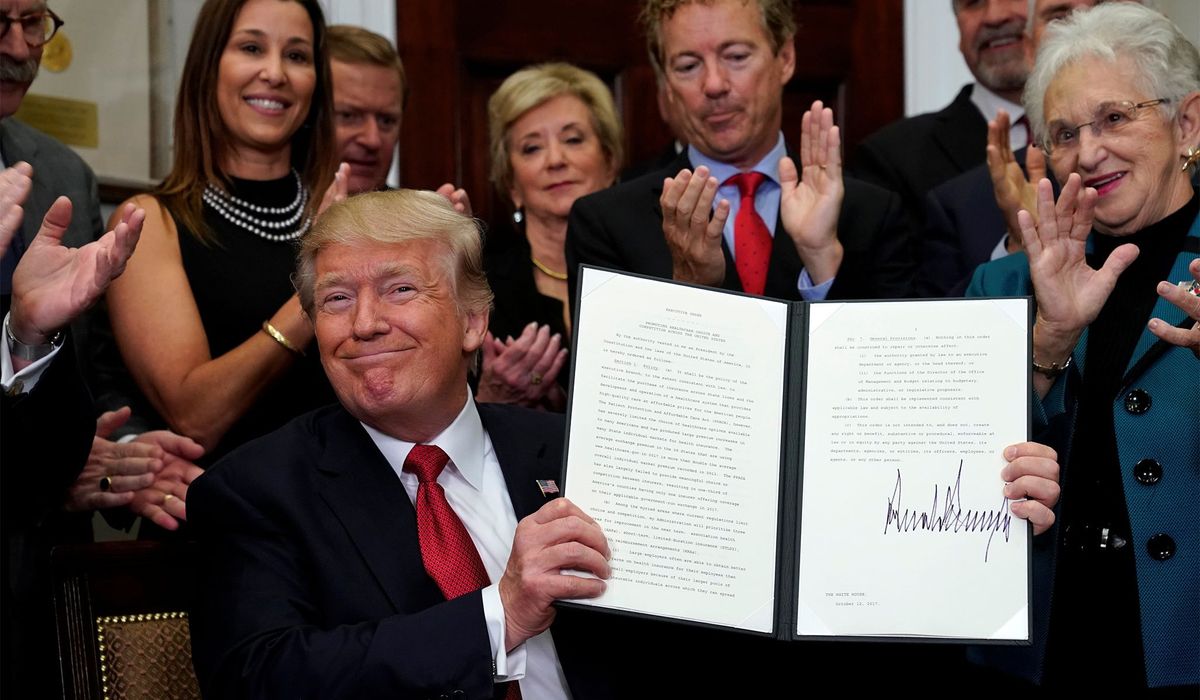What you need to know about President Trump’s executive order protecting preexisting conditions

A few minutes every morning is all you need.
Stay up to date on the world's Headlines and Human Stories. It's fun, it's factual, it's fluff-free.
Executive orders do not constitute new laws but are merely a directive toward the government on how to enforce already existing laws.
On September 24, United States President Donald Trump issued an executive order that he claims will protect preexisting conditions coverage for Americans.
The order, he says, will ensure coverage regardless of citizens’ health history, in effect shielding them from hidden medical fees and investing in critical areas of health care.
As part of his greater “America First" initiative, the mandate is the latest in an extensive series of executive orders issued by the sitting US president. In his first 100 days in office, the president signed a nearly unprecedented 24 executive orders. This has not occurred since World War II.
Critics however, view the order as merely an “internal memo," citing its lack of authority to create real, lasting change.
Understanding executive orders
An executive order is an instruction from the president that outlines how the government should operate within an existing law.
These orders have been used by every president – including Barack Obama – and often stem from a leader’s hope to bypass Congress, the US government branch whose power is relatively similar to that of the president.
According to the Congressional Research Service, there is no “definition of executive orders, presidential memoranda, and proclamations in the U.S. Constitution, there is, likewise, no specific provision authorizing their issuance."
Even still, these orders can become increasingly difficult to erase. While there is no explicit law that assures that these orders are enforced, Article II of the Constitution establishes and grants power to the executive branch of government, which is to say, the president.
The Article requires presidents to “take Care that the Laws be faithfully executed" or risk impeachment, meaning that any executive order issued by the president carries significant weight and is considered somewhat binding.
Still, this does not constitute a new law. Executive orders are merely a directive toward the government on how to enforce already existing laws.
Overturning executive orders
Although relatively rare, Congress has the authority to overrule an executive order by passing legislation that nullifies it, but this block is subject to a presidential veto. Should this be the case, Congress may override a veto with a two-thirds majority to end an executive order.
Congress can alternatively refuse to provide the funding necessary to carry out specific policy measures contained with the order.
Most commonly, however, these orders are invalidated when a new president steps into the White House and chooses to overturn one.
Orders under President Trump
Although an outspoken critic of these mandates, President Trump has issued countless executive orders over his first term in office. On September 22, he announced a contentious order prohibiting what he defines as “divisive" diversity trainings
The order calls out government merchants who teach critical race theory, white privilege and unconscious bias. It asserts that such training that “promotes race or sex stereotyping or scapegoating similarly undermines efficiency in federal contracting."
Under the command, the penalties for noncompliance are considerable. If agencies do not cooperate, contracts may be terminated and agencies can be restricted from working with the government.
“It’s a very harsh sentencing," says Liza Craig, a government contract expert at law firm Reed Smith. “It can have a very significant impact on a company and there can be financial penalties associated with it."
On September 24, President Trump issued another controversial executive order that he says “protects patients with preexisting conditions."
In a statement accompanying the order, he stated, “The historic action I’m taking today includes the first-ever executive order to affirm it is the official policy of the United States government to protect patients with preexisting conditions."
“This is affirmed, signed, and done so we can put that to rest," he said.
The statement has however, left some Americans feeling incredibly confused. In this case, these protections already exist within the Affordable Care Act (ACA) – the same law that the Trump administration asked the Supreme Court to overturn in June.
Should the affordable health insurance program – more commonly known as “Obamacare" – be overturned, as many as 23 million Americans would be left without health insurance.
While the ACA aims to provide these protections, it does not explicitly require insurance companies to abide by them, in effect allowing providers to deny coverage for numerous disabilities.
Without a new law and a clear, detailed plan on how to enforce the order, insurance providers have no legal incentive to carry out these protections.
Joe Antos with the American Enterprise Institute, a public policy think tank, said the order “has no technical content."
“All it really is," he says, “is a statement that he wants one or more of his departments to come up with a plan. And he doesn’t give any guidance or the vaguest outline of what that plan should be."
In the meantime, things remain unchanged for US citizens with preexisting conditions. However, even amid a pandemic, the fate of the Affordable Care Act is still uncertain.
Have a tip or story? Get in touch with our reporters at tips@themilsource.com




Comments ()